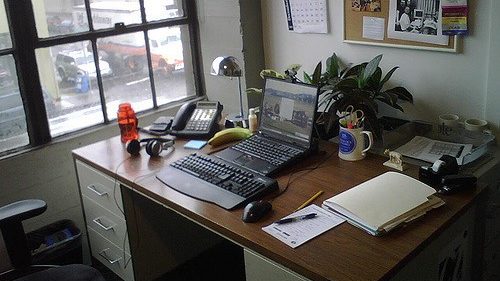Allocated Occupancy

Allocated
Some of these desks are in use, others are not, but it is likely that these desks are allocated to an organizations unit
Image licensed by Trollbackco

Unallocated
Thiscube farm has been vacated and a provision taken from the previousorganizational unit occupying it. It is now unallocated.
Image licensed by Daniel Tuttle
Assigned Occupancy

Assigned
This workstation is not currently in use, but the name plate indicates an assignment.
Image licensed by Famartin

Unassigned
The presence of reservation signage suggests this is not assigned. However, it is possible that the signage is being used even in assigned Spaces to support Gapping.
Image copyright Steelcase
Physical Occupancy

Physically Occupied
Thesedesks (ignoring the impromptu print station!) are Physically Occupied – thereis a person present at the desk.
Image licensed by MarkJaysonAranda

Physically Unoccupied
These desks are not Physically Occupied – no people are physically present.
Trace Occupancy

This desk shows Trace Occupancy – the presence of papers, the desk lamp being on, the computer logged in: all these indicate that a person is using this desk, even though they are not physically present.
Image licensed by Steve Burt

This meeting room shows no trace occupancy – there are no people present nor any physical signs that the room is in use. The digital signage indicates that the room is reserved, but in most organizations there is a common understanding that rooms are often reserved but unused.